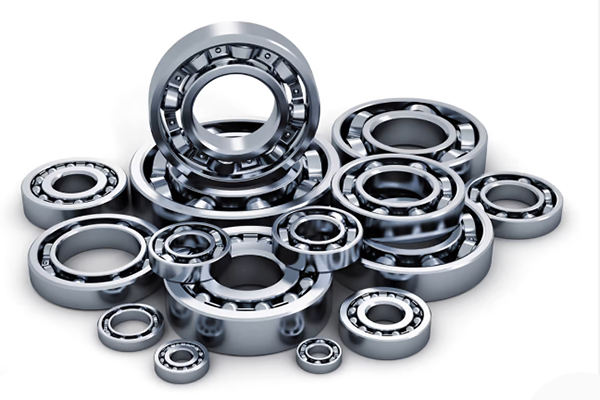
What is the ball bearing?
2024-06-25
So, what exactly is a ball bearing?
Imagine a miniature racetrack made of steel rings. Inside these rings, perfectly round balls roll smoothly, separating moving parts and minimizing friction. This ingenious design allows for effortless rotation while carrying significant loads. Ball bearings come in various sizes, from tiny bearings used in precision instruments to massive ones supporting giant wind turbines.

Why are ball bearings so important?
Their ability to reduce friction is what makes them critical. Friction, the force that resists motion, can wear down machinery and decrease efficiency. Ball bearings minimize this friction, allowing machines to operate smoothly and efficiently for longer periods. This translates to:
- Increased lifespan: Machinery with ball bearings lasts longer due to reduced wear and tear.
- Improved performance: Machines run smoother and with less energy wasted due to friction.
- Greater versatility: Ball bearings can handle both radial (sideways) and axial (pushing or pulling) loads, making them adaptable for various applications.
Where can you find ball bearings?
The answer is practically everywhere! Here are just a few examples:
- Transportation: Cars, bicycles, airplanes – all rely on ball bearings in their wheels, engines, and other components.
- Household appliances: From washing machines and dryers to blenders and fans, ball bearings ensure smooth operation.
- Electronics: Hard drives, printers, and even your smartphone utilize ball bearings for efficient movement of internal parts.
- Construction equipment: Cranes, excavators, and other heavy machinery rely on ball bearings to handle heavy loads and enable smooth operation.
The Future of Ball Bearings: Innovation and Specialization
The world of ball bearings isn’t stagnant. Manufacturers are constantly innovating, developing new materials and designs to improve performance and durability. We’re seeing advancements in:
- Materials: Ceramic and hybrid ceramic/steel bearings offer higher load capacity and better heat resistance for demanding applications.
- Sealing technology: Improved seals better protect bearings from dust, moisture, and contaminants, extending their lifespan.
- Miniaturization: Smaller, more precise ball bearings are enabling the development of even more compact and efficient machines.
Conclusion:
The next time you experience a smooth ride in your car or the satisfying spin of your fidget toy, take a moment to appreciate the tiny ball bearings working tirelessly behind the scenes. These unsung heroes of mechanics keep our world in motion, ensuring efficient and reliable operation of countless machines. As technology continues to evolve, ball bearings will undoubtedly remain a vital component, shaping the future of mechanical innovation.





